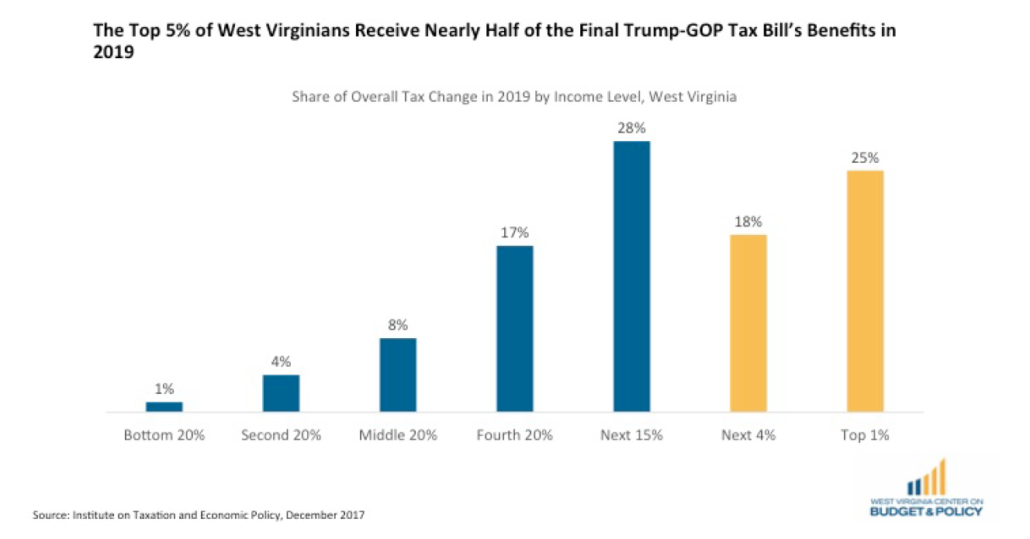Sen. Patricia Rucker: Leader of West Virginia’s Far Right Fringe
In the 2016 West Virginia Senate election, voters in Jefferson and Berkeley elected Patricia P. Rucker over Stephen Skinner by a margin of 2,773 votes – 6.5% of the votes cast. Rucker is a stay-at-home mom from Harpers Ferry who home schools her five children. Voters in this area are usually moderate, and fringe views on either side of the political spectrum don’t attract much support. But by her activity in the Senate and the attention she has received from national far right political groups, it is clear that Sen. Rucker is no ordinary West Virginian. Instead she has proven herself to be a leader in libertarian fringe politics to a degree that would shock most of the unsuspecting people who voted for her.
According to Rucker, she and her husband moved to West Virginia “as refugees from socialist Montgomery County [Maryland].” In 2009, she founded a local Tea Party chapter. After several years, that group restructured into a political action committee and began recruiting “liberty-minded” candidates for local office. Because none of these would step forward to challenge Skinner in the 2014 House of Delegates race, Rucker did. Skinner narrowly prevailed, but the two found themselves again opposing one another in the 2016 Senate race.
In connection with her 2016 election victory, the West Virginia Secretary of State reports that Rucker raised over $104,000. Heavily represented among her contributors were political action committees formed by corporations in the energy industry: First Energy PAC, AEP PAC, Arch PAC, Dominion PAC and Noble Energy PAC. She was also financially supported by other right-wing politicians in West Virginia: Peter Onoszko, Michael Folk, Eric Householder, Jill Upson, Elliott Simon and “Mooney for Congress.” The Tea Party group she founded and led – We the People of West Virginia – also donated money to her campaign.
Once in the West Virginia Senate, Rucker began to sponsor a slew of bizarre bills, many of which never got out of committee. A significant number of these bills would benefit people with the narrow interests and views held by Sen. Rucker herself. For example, several of these bills involve home schooling. One called the “Tim Tebow Act” (SB130) would allow home school children to participate in public school extra-curricular activities like football. People who support this legislation want to pick and choose which aspects of public education their children will enjoy. She also led an effort to have pornography declared a “public health crisis,” claiming that it was hypersexualizing teenagers.
Acting on her own religious beliefs, Sen. Rucker has sponsored several bills attacking abortion. One is the “Life at Conception Act” (SB 405), which would contradict current U.S. law and make medical professionals who perform abortions in the first trimester of pregnancy legally responsible for violating a “right to life” of the fetus.
Just recently Sen. Rucker introduced Senate Joint Resolution 12 that would put on the November 2018 ballot a proposed amendment to the West Virginia Constitution declaring that nothing in that Constitution creates a right to abortion. This amendment would prevent the Constitution from being used to argue against further abortion restrictions, such as banning Medicaid funding of abortion, which Rucker is also pushing. After a successful vote in the Senate, the West Virginia ACLU issued a statement saying “25 legislators have chosen to side with misogynists and fundamentalist religious extremists who are hell-bent on imposing their own religious agendas on all West Virginians.”
Her effort to place the proposed amendment on the November 2018 state-wide ballot is also viewed by many as an effort to ensure turnout by religious fundamentalists in an election that appears to be trending badly for Republicans at all levels.
Sen. Rucker has also sponsored the “Taxation With Representation Act” (SB 399) whereby nonresidents of a municipality who work in that municipality and who pay a tax or user fee pursuant to a municipal ordinance would be permitted to vote in municipal elections. In other words, merely paying a user fee would enfranchise any person, who has no other connection or interest in a municipality’s affairs, to select the municipality’s elected officials. Anti-tax fanatics love this kind of thing. Sen. Rucker has also engaged in blaming the victim. She sponsored a bill (SB60) that would have added work requirements for SNAP benefits (food stamps).
By virtue of her performance as a legislator, Rucker has risen in the esteem of right-wing groups. For example, she was selected to be the State Chair for the American Legislative Exchange Council, an organization funded by large corporations and the notorious billionaire Koch brothers. This innocuous-sounding organization is actually a libertarian legislation mill for sympathetic state legislators around the country. According to the group’s website, it works with legislators “dedicated to the principles of limited government, free markets and federalism.” ALEC creates “model” laws and policies, among which are model state resolutions calling for the U.S. Congress to convene a convention to amend the Constitution under Article V.
An Article V convention by which to advance a balanced budget amendment to the Constitution is the dream of the Koch brothers and all libertarians. In her groundbreaking 2017 book Democracy in Chains, Nancy MacLean details how a balanced budget amendment would be used to handcuff Congress and ensure that spending would be virtually eliminated for Social Security, Medicare, Medicaid and all other discretionary social spending the libertarians hate. This would be the case despite overwhelming support for these programs by the majority of voters. Even conservative legal scholars like Justice Antonin Scalia have opposed a constitutional convention because there would be no telling what dangerous proposed amendments would emerge.
Alarmist you say? It could never happen here? Article V states that the Constitution can be amended when two-thirds of the state legislatures apply to Congress to convene a convention and any amendments that that are proposed are ratified by three-fourths of the states. Two-thirds of the states would be 34 states. In 2016, West Virginia became the 28th state to apply for a convention. That application (HCR36) is straight out of the ALEC playbook. In the current West Virginia legislative session, two related pieces of legislation have been proposed that double down on this effort.
On January 26, 2018, Rucker and others introduced a Senate Resolution (SCR9) which again calls on Congress to convene a convention, asserting that Congress has abused its power by creating a national debt, that the federal government has ceased to follow the Constitution, and that the states themselves can limit such convention to amendments that “impose fiscal restraints on the federal government, limit the power and jurisdiction of the federal government, and limit the terms of office for its officials and for members of Congress.”
At the same time a second, breathtakingly anti-democratic companion piece of legislation (SB95) was introduced by Rucker and two other libertarian fringe Senators — Robert Karnes (R-Upshur, 11) and Mark Maynard (R-Wayne, 06). It would prohibit a West Virginia delegate from participating in any convention where the states are represented proportionally by population. In other words, each state may have only one vote regardless of size. This would shift power to rural states and away from large blue states like California and New York. Further, SB95 calls for immediate removal of any West Virginia delegate who votes for an amendment outside the purposes in the state’s application and would subject that delegate to criminal prosecution. Sen. Rucker’s two pieces of legislation seek to rig the rules of a convention to ensure the outcome the libertarian right desires even though the majority of West Virginia voters might want another outcome.
Sen. Patricia Rucker is not simply a benign legislator with a few quirky ideas. She is on a mission to impose her libertarian and religious fundamentalist views on the rest of us in whatever way she and her like-minded colleagues can manage. Along the way, she will dispense with majority rule democracy as an inconvenience in achieving the end she seeks.


